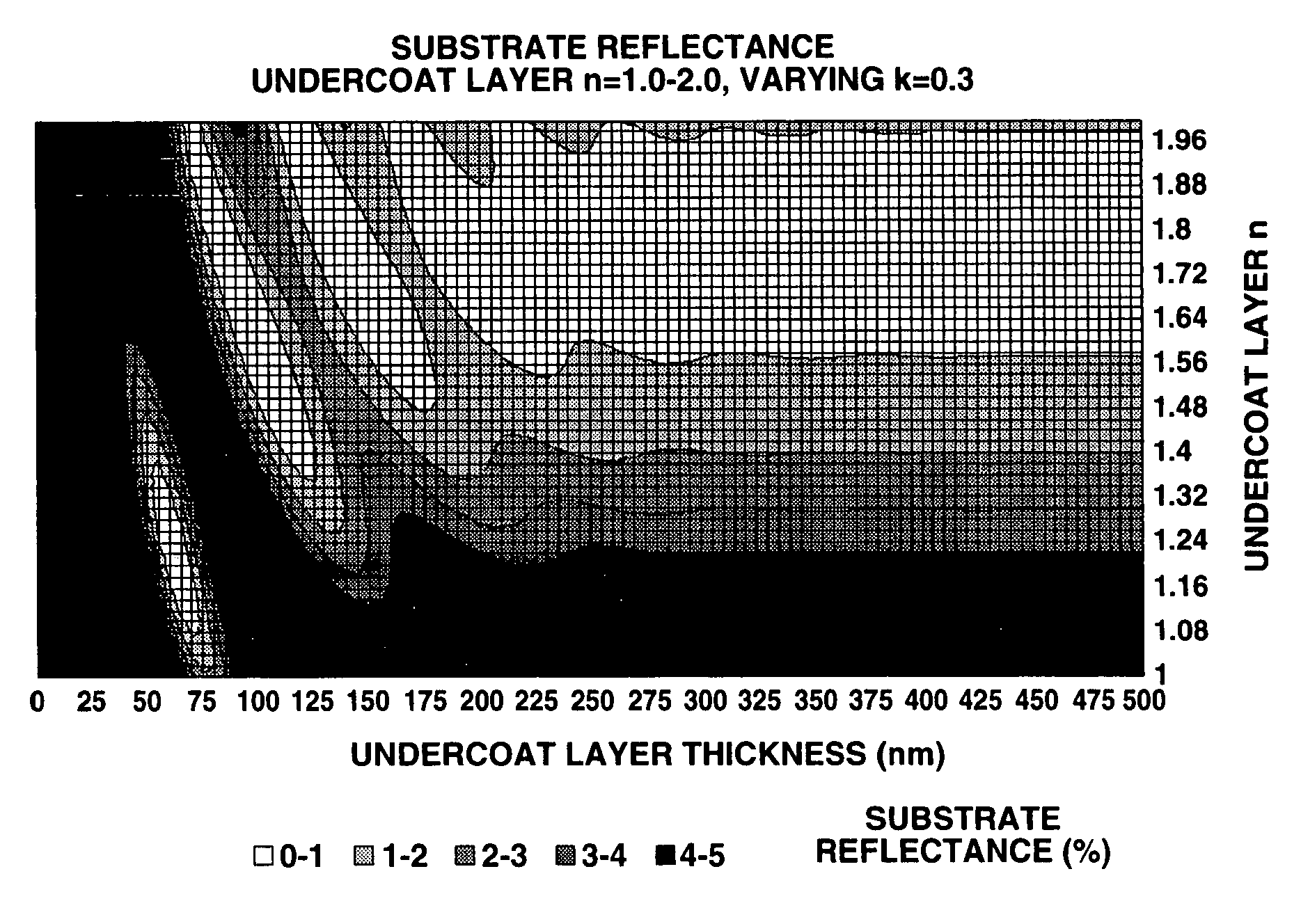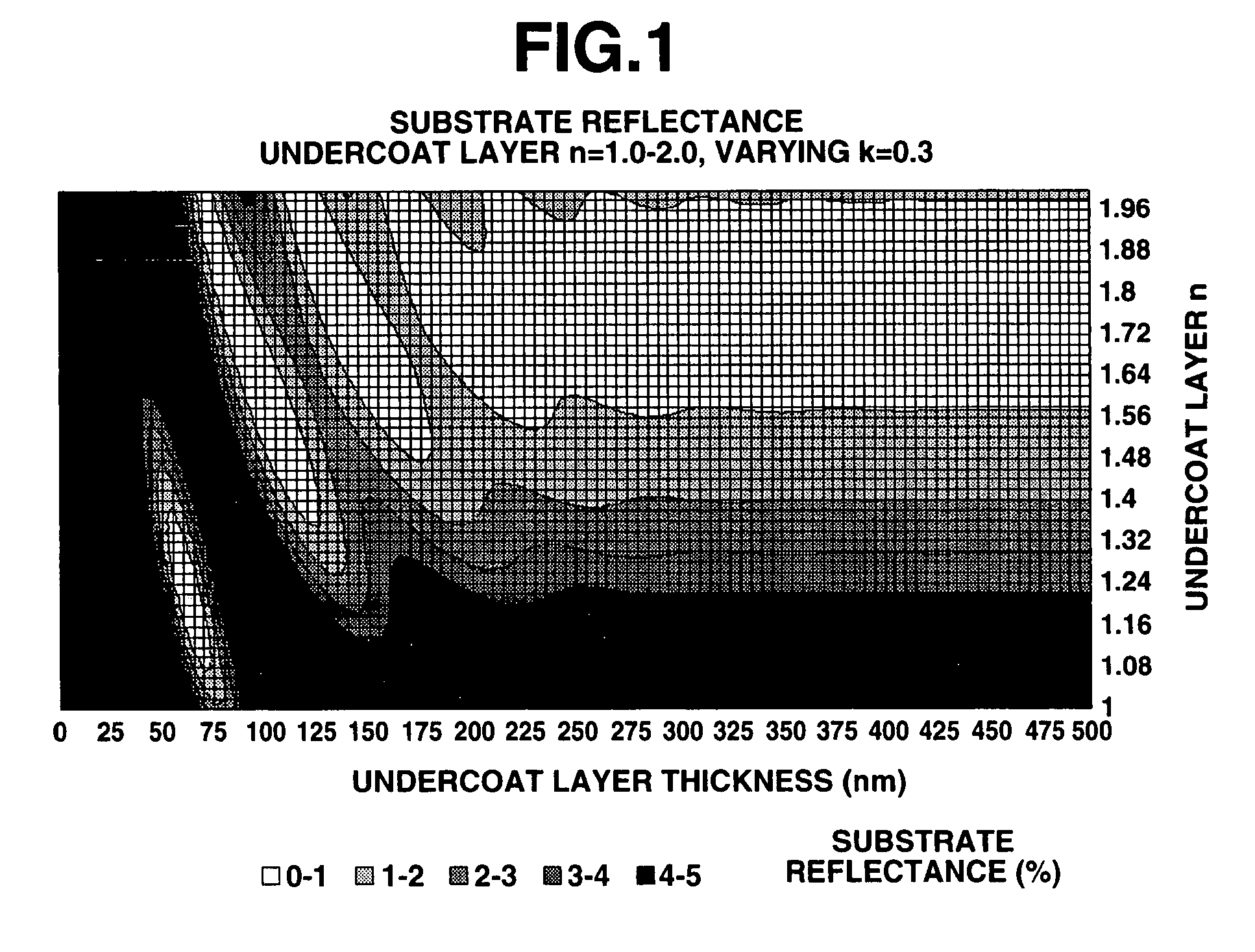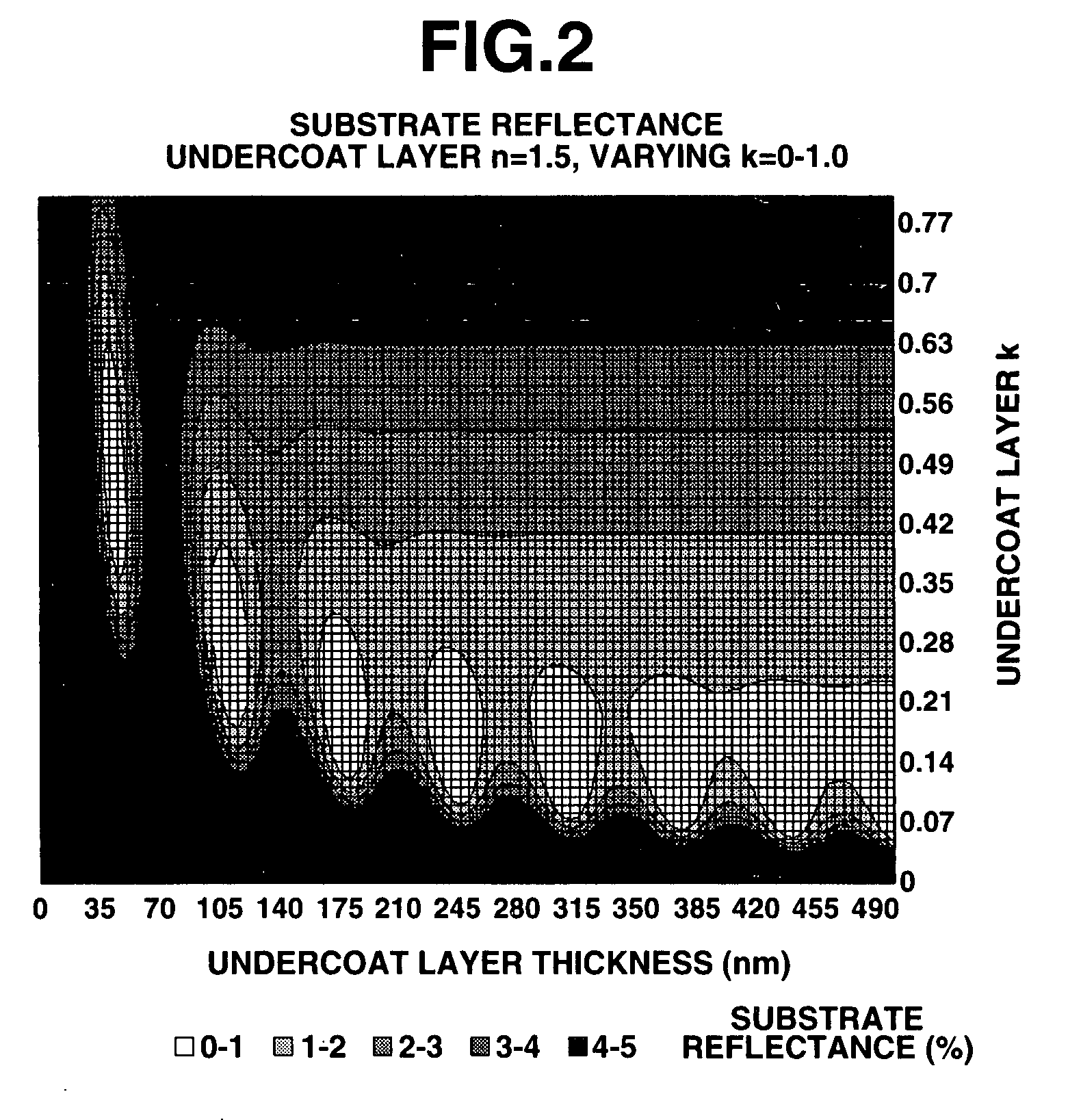Photoresist undercoat-forming material and patterning process
a technology of undercoat and patterning material, which is applied in the field of undercoat forming material, can solve the problems of increasing surface roughness after etching to a serious concern, weak resistance of acrylic polymer to substrate etching, and approaching the essential limit of resolution determined by light source wavelength, etc., and achieves satisfactory anti-reflective effect and high etching resistance
- Summary
- Abstract
- Description
- Claims
- Application Information
AI Technical Summary
Benefits of technology
Problems solved by technology
Method used
Image
Examples
synthesis example 1
[0138]A 300-ml flask as charged with 200 g of Compound 1 shown below, 75 g of 37% formalin, and 5 g of oxalic acid. With stirring, reaction occurred at 100° C. for 24 hours. The reaction solution was poured in 500 ml of methyl isobutyl ketone and thoroughly washed with water to remove the catalyst and metal impurities. The solvent was distilled off under a reduced pressure, and the system was further evacuated to 2 mmHg at 150° C. for removing the water and unreacted monomer, yielding 163 g of Polymer 1.
[0139]The polymer was determined for Mw and Mw / Mn by GPC and analyzed for composition by 1H-NMR.
Mw=8,000
Mw / Mn=3.20
[0140]It is noted that Compounds 1 to 4 were used as the bisphenol compound of formula (1) in Synthesis Example 1 as well as Examples and Comparative Examples to be described later.
[0141]The blending poliymers used include Blending Polymer 1 produced by radical poyeiain Blending Polymer 2 produced by cation polymerization, Blending Polymer 3 produced by metathesis catalyz...
PUM
| Property | Measurement | Unit |
|---|---|---|
| Angle | aaaaa | aaaaa |
| Volumetric flow rate | aaaaa | aaaaa |
| Volumetric flow rate | aaaaa | aaaaa |
Abstract
Description
Claims
Application Information
 Login to View More
Login to View More - R&D
- Intellectual Property
- Life Sciences
- Materials
- Tech Scout
- Unparalleled Data Quality
- Higher Quality Content
- 60% Fewer Hallucinations
Browse by: Latest US Patents, China's latest patents, Technical Efficacy Thesaurus, Application Domain, Technology Topic, Popular Technical Reports.
© 2025 PatSnap. All rights reserved.Legal|Privacy policy|Modern Slavery Act Transparency Statement|Sitemap|About US| Contact US: help@patsnap.com



